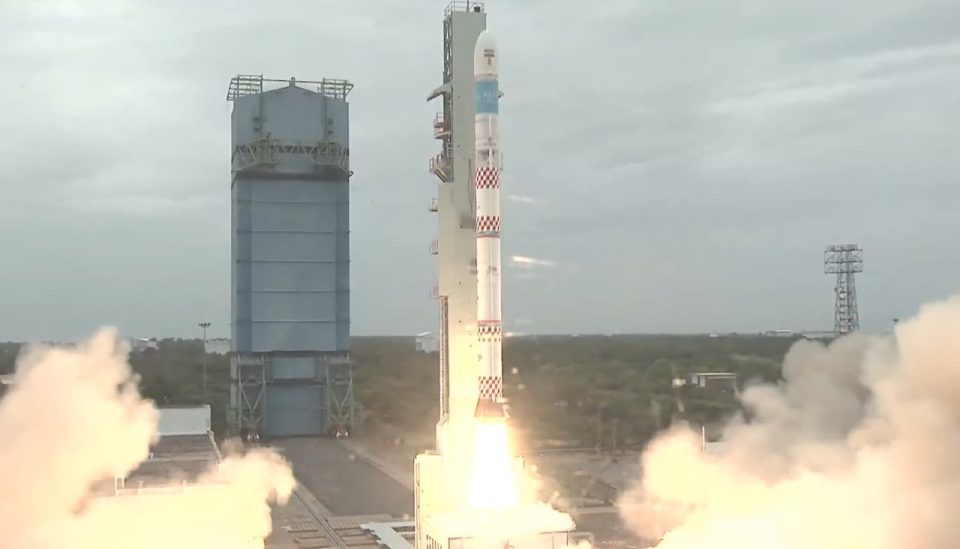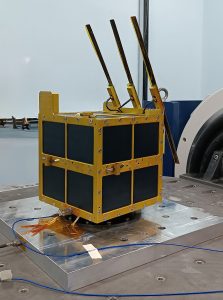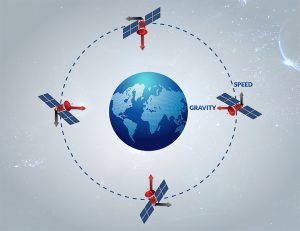
Explained: What went wrong with ISRO's latest launch vehicle SSLV-D1
An exhaustive and easy-to-understand explainer about how a glitch in the VTM of ISRO's SSLV-D1 drove its satellites onto a wrong orbital path, which eventually led them to spiral down to earth

Rockets haul satellites and give them a velocity boost in space to keep them in their designated orbits. And, rockets do that in stages by expending large amounts of fuel (propellant). When the rocket engines burn the propellant, a large thrust develops; it acts as the counter force that lifts the rocket and the satellites perched on its tip. The thrust overcomes the gravity pull and the atmosphere’s air drag, facilitating a powered ascent. About 90-95 per cent of the rocket motor weight is of the propellant.
Once out of the atmosphere, there is no air drag; at this stage, the rocket has to accelerate to reach the required orbital height. The burning propellant now provides the velocity boost.
Also read: ISRO faces setback as maiden SSLV mission suffers data loss
Once that is achieved, the final rocket part, called the velocity trimming module (VTM), comes into play; it releases the satellites with the necessary velocity into their orbits. The VTM also burns in stages to fine-tune the satellite speed, ensuring they settle comfortably into the designated orbit.
What let down SSLV-D1?
A glitch in the VTM of SSLV-D1 brought down two of the Indian Space Research Organisation’s satellites on August 7, prompting the space agency to declare the mission a failure. SSLV is the newest addition to its fleet of launchers.
SSLV (short for Small Satellite Launch Vehicle) can launch mini, micro, or nanosatellites of 10-500 kg mass into a 500 km planar orbit, designed as a low-cost and launch-on-demand facility for global clients. It has a low turnaround time and flexibility to accommodate multiple satellites with minimal infrastructure to launch into Low Earth Orbit. This was SSLV-D1’s maiden launch.
The primary satellite was ISRO’s earth observation satellite EOS-2, a 135-kilo microsat for advanced optical remote sensing operations in the infra-red band with high spatial resolution. In addition, hitching a ride was an 8-kilo CubeSat called AzaadiSAT designed by 750 girl students from rural schools across India.

What did happen to the launcher?
The SSLV took to the skies at 9:18 am, the first two stages unfurled precisely. However, in less than 11 minutes, the launcher developed a software logic issue, and ISRO lost communication with it. According to media reports, the final module, VTM, which runs on liquid propellants, switched off soon after ignition.
VTM was expected to burn for 20 seconds after reaching a height of 350 km but lasted only 0.1 seconds. After that, the rocket went into a redundant mode, said ISRO. Unfortunately, due to the failure of the crucial stage, the satellites were set on the wrong path. ISRO said that instead of placing them in a 356 km circular orbit, the satellites went into a 356 km x 76 km elliptical orbit.
Why is the orbit crucial?
It all boils down to the resultant force on the satellite, which will keep it going without a fuss. As we know, the earth’s gravity pulls objects downward. Gravity also does the same in space and tends to pull smaller objects (like the satellites) towards the ground. So, satellites must be put in such a way that they circle the earth instead of getting drawn down.

A classic example of a ball being thrown will explain the dynamics. A ball thrown down from a height takes a curved path before hitting the ground. Gravity pulls it down on the ground, and the drag due to air slows the ball. Depending on how much initial force we give to the throw, the ball travels that far, overcoming the two forces acting on it.
If we take the ball to space, there is no air drag; only gravity acts on it. As a result, the ball will travel in a curved path in space also due to the resultant force of the forward movement of the ball and the centripetal (inward) pull of gravity.
Suppose we can throw the ball in space with so much power that its curved path matches the earth’s curvature. In that case, the ball will end up trying to fall to the ground indefinitely without actually falling. This is because, at every point, the earth’s gravity is pulling it inward, whereas the ball is moving forward. The resulting force keeps it forever on the curved path. In other words, it will begin circling the earth.
Similarly, the initial force or speed of the satellite will set it on a tangential path. Still, the gravity will be pulling down at each point. The resultant force (angular velocity) will put the satellite on a curved path. As a result, the satellite stays at a constant height from the earth, taking a huge curved path that matches the earth’s curvature.
So, what is the ideal speed for the condition? It turns out to be about 8km/sec. This is because the earth curves by 5m for every 8 km. Therefore, if the satellite travels at a constant speed of 8 km/sec, its height will drop by 5m, which matches the earth’s curvature. As this happens at every point, the satellite takes a circuitous path around the earth. So once the satellite is put in orbit, it does not need much assistance to keep it going.
Low earth orbit satellites are injected in circular orbits at heights 150-1000 km above the earth on a path along the equatorial plane in a west to east direction. As these orbits are planar, several prospective tracks are available by tilting the angle – the axial tilt about the equatorial plane.
SSLV’s satellite orbits were angled at 37 degrees and were intended to be positioned at 356 km in a circular orbit. Instead, the satellites entered an elliptical orbit due to the glitch in the terminal stages.
Also read: ISROs maiden SSLV carrying earth observation and student satellite blasts off from Sriharikota
Why couldn’t the satellites continue in the elliptical orbit?
In an elliptical path, the satellite has two reference points of the earth: one at its closest approach to earth (perigee) and the other at its farthest (apogee). The gravitational pull on the satellite is different due to these varying distances. So, the satellite must vary its speed to match up and stay along the orbital path. Unlike circular orbits, elliptical orbits are not constant speed paths and therefore require additional boosts periodically to remain in the trajectory.
In SSLV’s case, the perigee was 76 km above the earth – which is too close to the ground. As a result, the satellites faced air drag and quickly lost altitude, spiralling down to earth. Within a few hours of the launch, ISRO confirmed that the satellites had already deorbited and were no longer usable.
How does ISRO view the setback?
Orbital failures are common in space missions. ISRO, a veteran in space missions, has witnessed such orbital placement failures earlier. Only to learn quickly from them and emerge victorious in subsequent attempts, catapulting the agency into the top league as a leading spacefarer. True to this spirit, the space agency tweeted soon after the incident: “ISRO will come back soon with SSLV-D2.”
The optimism also percolated down to the AzaadiSAT’s team. “The catastrophe has not dampened the spirit of the 750 students,” said Srimathy Kesan, founder and CEO of Space Kidz India, the Chennai-based private company that coordinated AzaadiSAT. “They were thrilled with the opportunity of a hands-on experience of building a satellite. The launch failure has only ignited the children’s resolve to build another satellite soon,” she added.

